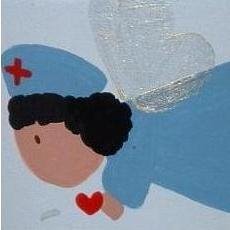Amniocentesis: Removal of some fluid surrounding the fetus for analysis. Fetus location is identified by US prior to the procedure. Results may take a month.
Used to check for: Spina bifida, Rh compatibility, Immature lungs, Down syndrome
Chorionic villus sampling: Removal of placental tissue for analysis from the uterus during early pregnancy. US helps guide the procedure. 1-2 weeks get the results. Can be performed earlier than amniocentesis.
Used to check for: Tay-Sachs disease, Down syndrome, Other disorders
Preeclampsia: presence of protein in the urine, and increased BP during pregnancy. Found in 8% of pregnancies.
Eclampsia: seizures occurring during pregnancy, symptoms of pre-eclampsia have worsened. Factors that cause eclampsia vs. pre-eclampsia relatively unknown.
Oligohydramnios: Low levels of amniotic fluid that can cause: fetal abnormalities, ruptured membranes and fetus disorders.
Polyhydramnios: High levels of amniotic fluid that can cause: gestational diabetes and congenital defects.
Polyhydraminos Causes:
Beckwith-Wiedemann syndrome
Hydrops fetalis
Multiple fetus development
Anencephaly
Esophageal atresia
Gastroschisis
Sheehan’s syndrome: hypopituitarism caused by uterine hemorrhage during childbirth. The pituitary gland is unable to function due to blood loss.
Breast infections/Mastitis: Infection or inflammation due to bacterial infections. (S. aureus).
Atrophic vaginitis- low estrogen levels cause inflammation of the vagina. Most common after menopause.
Cervicitis: infection, foreign bodies,or chemicals that causes inflammation of the cervix.
Pelvic inflammatory disease: infection of the fallopian tubes, uterus or ovaries caused by STD’s in the majority of cases.
Toxic shock syndrome: infection of (S. aureus) that causes organ disorders and shock.
Hirsutism: development of dark areas of hair in women that are uncommon.
Causes:
Cushing’s syndrome
Congenital adrenal hyperplasia
Hyperthecosis
PCOS
High Androgen levels
Certain medications
Dysmenorrhea: painful menses.
Endometriosis: abnormal tissue growth outside the uterus.
Stress Incontinence: A laugh, sneeze or activity that causes involuntary urination. Urethral sphincter dysfunction.
Urge incontinence- urine loss caused by bladder contraction.










0 comments:
Post a Comment